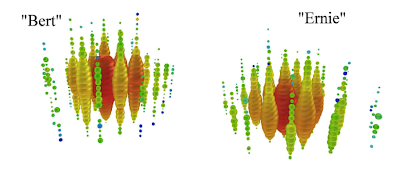Neutrino Astrophysics: PeV-energy neutrinos!
, 2 min, 363 words
Tags: physics neutrinos astrophysics
Well, I thought I was done with neutrino astrophysics yesterday, but then I read about the recent discovery of two extremely high-energy neutrinos by the IceCube collaboration.
As I've mentioned before, IceCube is a Cerenkov detector. Its 'detector' consists of about a cubic kilometer of ice in the Antarctic, and it has 86 strings of detectors suspended in the ice. They typically detect solar and atmospheric neutrinos, but in an article submitted to Phys. Rev. Letters last month, they report the detection of two peta-electron volt neutrinos. That's $10^{15}$ electron volts! These high-energy events are very unlikely to have resulted from cosmic ray interactions with the atmosphere (though the collaboration is investigating the possibility that they resulted from the decay of charmed particles produced by high-energy cosmics), and the collaboration is fairly sure that they're actually a product of some extremely high-energy astrophysical events. In the paper, they suggest gamma ray bursts or active galactic nuclei as potential sources, and they're hopeful that further analysis will reveal more similarly energetic neutrinos or give clues to their origin.
Oh, and just as proof that physicists have a sense of humor, the detected neutrinos have been named Bert and Ernie. It's even in the graphics for the paper!

The above graphic (taken from the paper) provides a visualization of the events in question. Each sphere shows the data from one photomultiplier tube embedded in the ice. The size of the sphere shows how many photoelectrons were detected, and the color shows the time at which the detection occurred, from red for the first detections to blue for the last. The energy of the event can be determined from the total number of photoelectrons detected, and the collaboration calculated energies of 1.04 and 1.14 PeV for Bert and Ernie, respectively.
For those interested, the paper in question can be found here.
Other neutrino-related posts can be found here.